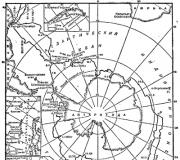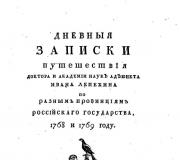Pictures made of wool are an unusual gift! Wool painting "Autumn landscape". Master class with photo Paintings wool watercolor MK autumn
Author: Natalia Albertovna Fomicheva, teacher, MDOU general developmental kindergarten No. 30 “Teremok”, city of Rybinsk, Yaroslavl region.
Materials:
small frame with glass
fleece to frame size
nail scissors
tweezers
Polish for hair
colored wool for needlework

What is autumn famous for? A rich harvest. Forest, vegetable and garden gifts.
Why is autumn so unpredictable? Frequent weather changes. A sunny and clear day easily turns into a rainy, windy and slushy one. It’s not for nothing that people say: “Autumn means eight weather days.”
What is autumn famous for? A riot of colors and variety! I want to remember every moment spent in nature for a long time. After all, the season of frosts and long nights is ahead. 
In order to leave the colors of autumn in our memory, we will try to capture them. We will draw with colored wool.
Progress:
Remove the cardboard backing from the frame.
We turn it over and place it on a suitable piece of fleece or light plain flannel. The fabric can be replaced with a regular viscose napkin, which is intended for cleaning. In this case, yellow fleece was used. Even if the wool were translucent, the color of the base would only emphasize the autumn color. 
Carefully trim off the excess fabric around the perimeter of the cardboard.
We place the base horizontally. 
For work, it is advisable to have a large selection of “wool paints”. The wider the color palette, the more interesting the work and its final version will be. 

So, let's start drawing with wool.
Just above the middle of the picture we outline the horizon line. Ocher wool. These will be the distant outlines of the coast. 
Below the coastline, we lay out yellow and light green wool in broad strokes. This is a coastal area. 
Then we separate the shore and water with a light light turquoise stroke. On the right it turns into ocher. This is a reflection of the shore. 
We draw the sky with white wool. Whiteness conveys a feeling of freshness. We immediately create a reflection of the autumn sky in the water. 
In the upper left corner we thicken the clouds. The sky is blue-blue. Duplicate the blue reflection. So far a little lighter than heaven. 
We use brown wool to highlight the high ground. Only its upper boundary is reflected in the water with a red-brown tint. 
We dilute the blue of the river and the white of the sky with lilac. After all, autumn is rich in colors! 
Using yellow cutting we begin to form the crowns of the trees. Don't forget about the reflection in the water. 
Then we do the bright red cutting. To add a little volume to the silhouettes of the trees, we place red leaves in places directly over the yellow ones. Even under glass, a tight overlay will be noticeable. The reflection in the water should not be dense. Let it remain translucent. Shade the water with a dark stroke of gray wool. 
And again we use yellow cutting to highlight individual trees. 
We also highlight several trees in the reflection. Absolute symmetry is not needed. Just a hint of it. 
Using thin twisted woolen flagella of black and white, we carefully draw the tree trunks. Curving them gracefully and intricately.
The reflection in the water may not coincide with the image of the trunks on the hill. After all, not all trees could be reflected.
It will be more convenient to fix the trunks with hairspray. In general, all jewelry work when drawing with wool involves fixation. At the discretion of the artist. When exactly - only practice and intuition can tell. 
Now you can add green colors. On the shore there are grasses that have retained their greenery. And behind the grove is a spruce copse. 
We shade the Christmas trees with dark pine needles and draw trunks here and there. 
We pass along the tops of the fir trees with emerald cutting. Our landscape is ready! 
Cover with glass and insert into a frame. 
Drawing with wool is warm, soft, soulful. Brings only positive emotions. Wool painting itself is in no way inferior to paints. I want to stare at it endlessly! I recommend everyone to try it! 
Svetlana Vatolina
It is very important that a child from a very early age develops a love for beautiful so that a creative spark ignites in a little heart! Work on developing creative abilities begins in our MBDOU from the first junior group and continues throughout preschool childhood. Currently I work with children of a mixed-age junior group, which is attended by children from two to three years old.
For work we need: picture frame, PVA glue, wool for felting different colors, good mood.


First, the children and I glued the base on which the picture will be placed.
We needed PVA glue and a regular rag napkin (which can be any color, I chose yellow).
After we glued the base, the most interesting, very exciting work began! Having thoroughly researched the "material for drawing", we chose the background for our picture!


We laid out the background of the picture, choosing orange for this wool.


For sky and earth, grass and leaves, we had fun choosing the right color wool.
And then a miracle happened, which we were really waiting for, they began to appear in our picture, as if magic: sky, trees, grass, leaves. How much joy the children experienced when they saw what they made with their own hands!

In order to create a tree trunk or tree branches, you need to try very hard! We rolled up wool and laid out trunks and branches one after another, forming trees. And then, we selected the color for the leaves.


Beautiful autumn leaves not only decorate the trees, but also spread across the grass in a multi-colored carpet and seem to swirl in the air. And in heaven we drew a few"birds" that fly away to warmer climes.

Our work is ready! The painting is placed in a frame with glass.
We invite you to admire this real miracle, beautiful work done with love by our kids.
Publications on the topic:
 The guys in our group first became acquainted with the unconventional technique of drawing with colored wax crayons “Frottage”, and they really liked it.
The guys in our group first became acquainted with the unconventional technique of drawing with colored wax crayons “Frottage”, and they really liked it.
Summary of the drawing lesson “Magic colors of the native land” Lesson summary “Magic colors of our native land” Purpose: to introduce children to the new technique of unconventional painting on water, EBRU. Tasks:.
 So autumn has come. Everything around got rich. It’s still warm outside, the wind swirls the leaves in the air, which fall to the ground in different colors.
So autumn has come. Everything around got rich. It’s still warm outside, the wind swirls the leaves in the air, which fall to the ground in different colors.
 Goal: to introduce a new drawing technique (volumetric paints made from shaving foam) Objectives: - to develop color perception, a sense of composition.
Goal: to introduce a new drawing technique (volumetric paints made from shaving foam) Objectives: - to develop color perception, a sense of composition.
I present a master class - an autumn version of snowflakes. To complete the master class we will need: colored paper, scissors, simple paper.
Dear Colleagues! In order to maintain a positive psychological state, Tatyana Borisovna Grinevich invites you to visit.
Target: Develop wool drawing skills.
Tasks: Expand children's understanding of the variety of means and methods of drawing. Form aesthetic taste. Develop creativity and imagination, associative thinking and curiosity, observation and imagination. Support children's initiative. To form primary ideas about the properties of wool, color, shape, size. Develop the prerequisites for value-semantic perception and understanding of works of fine art and the natural world; develop an aesthetic attitude towards the surrounding world; to form basic ideas about types of art; implement independent creative activities of children.
Preliminary work: Examination of reproductions of autumn landscapes by Russian artists. A conversation about artists' use of drawing tools and methods. A conversation about the color palette in autumn landscapes. Observing changes in nature while walking. Conversation about natural phenomena inherent in autumn.
Material: decorative sheep wool of different colors (yellow, orange, light gray, light green, brown), photo frame (with glass), a piece of flannel or cotton to fit the frame, scissors.
Progress of the lesson:
It's a sad time! Ouch charm!
Your farewell beauty is pleasant to me -
I love the lush decay of nature,
Forests dressed in scarlet and gold,
In their canopy there is noise and fresh breath,
And the skies are covered with wavy darkness,
And a rare ray of sunshine, and the first frosts,
And distant gray winter threats.
This poem about autumn was written by the great Russian poet A.S. Pushkin. And indeed, bidding farewell to us, nature appears to us in all its glory. Dresses us in the most expensive and most beautiful outfit.
What colors does autumn use to present itself to us at its best?
Children's answers
I suggest you draw an autumn landscape today. But we will not paint with paints! And we will draw with wool. Take your seats.
Here is natural purified sheep wool of different colors. Feel how soft it is, try to tear off a piece, try to separate it a little. You see, wool is made up of fibers; by dividing it into small pieces, you and I can paint a real picture.
For inspiration, you can look at the autumn landscapes of Levitan, Shishkin, Rylov and Ostroukhov.
1st stage: On a pre-prepared base (you need to glue a piece of fabric of the same size to the back wall of the frame so that the wool does not slip), lay out the gray wool in one layer, horizontally. Then we lay out a second layer of the same wool vertically. The background is ready.
2nd stage: In the middle of the background we create a small haze of green wool, using very thin fibers for this.
3rd stage: We pluck the yellow wool and form balls. This is the crown of trees. I'll make five, and you can make as many as you like. I'll add some brown wool to the bottom two trees for contrast.
4th stage: I pinch off fibers for the trunks. I put them into the picture. There should be as many trunks as there are trees.
5th stage: Using scissors, we cut yellow and green “leaves” into the crown. At the bottom we make a haze of thin wool fibers in brown, green and yellow colors. Add orange “leaves” on top.
6th stage: We form a bird in the shape of a checkmark from brown wool and place it in the corner of the picture. We correct all the irregularities. Place glass on top and insert frame. We cut off the wool sticking out from under the frame with scissors.
I would like to finish our work with Ivan Bunin’s poem “Falling Leaves”
The forest is like a painted tower,
Lilac, gold, crimson,
A cheerful, motley wall
Standing above a bright clearing.
Birch trees with yellow carving
Glisten in the blue azure,
Like towers, the fir trees are darkening,
And between the maples they turn blue
Here and there through the foliage
Clearances in the sky, like a window.
The forest smells of oak and pine,
Over the summer it dried out from the sun,




